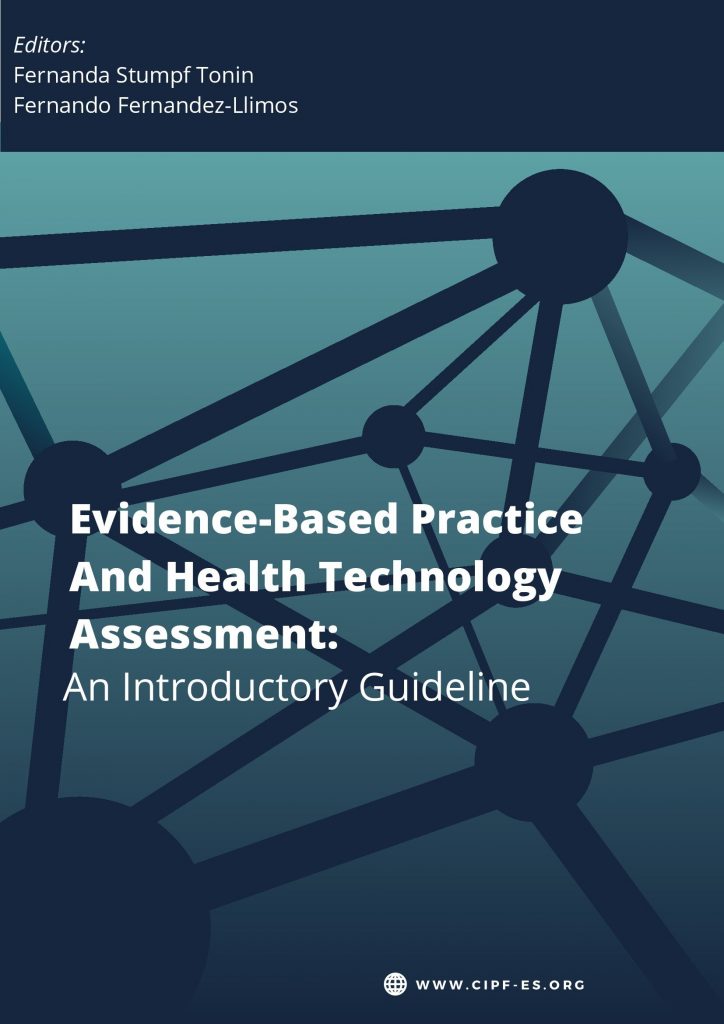
Evidence-Based Practice and Health Tecnology Assessment: An Introductory Guideline.
Tonin FS, Fernandez-Llimos F, eds. CIPF, 2021.
ISBN 978-84-124195-0-4
Healthcare professionals are constantly involved with scientific information and should be able to carefully select resources and keep updated on new literature and new tools to address a variety of healthcare decisions. Evidence-based practice is a key-element and indicator of high-quality patient care. The evidence’ strength depends, among others, on the study design and rigor of the methods used. Epidemiological studies are the main source of information, broadly classified into primary or secondary sources. Studies can also be divided into observational or interventional studies, according to the researcher’s role. Observational studies are usually classified into descriptive studies (e.g. case or series report), or analytical studies (e.g. cross-sectional studies, ecological studies, case-control and cohort studies). Among the experimental or interventional studies, the randomized clinical trials stand out, as these are gold-standard models to evaluate the effects of a health technology in a given clinical setting. Secondary studies (e.g. narrative review, scope review and systematic review) synthesize information from primary studies, aiming at reducing the selection bias. The overall scientific evidence is classified into hierarchical levels according to the credibility (quality) of the information. This chapter provides an overview of the main concepts of evidence-based healthcare aiming at enabling healthcare professionals, students, and researchers to search, synthetize and critical analyze different epidemiological studies and clinical evidence.
Keywords: evidence-based health; study design; epidemiological studies
Editors
Fernanda Stumpf Tonin: PhD in Pharmacy (University of Lisbon, Portugal) and PhD in Pharmaceutical Sciences (Federal University of Paraná, Brazil). Visiting Research at University Technology of Sydney (Australia). HEOR consultant and scientific adviser. Member of the Editorial-board of Pharmacy Practice. Vice-chair of the Pharmacy Practice Special Interest Group (SIG) of International Pharmaceutical Federation (FIP).
Fernando Fernandez-Llimos: PhD in Pharmacy (University of Granada, Spain). Professor at the Faculty of Pharmacy (University of Porto, Portugal). Researcher at the HIS-EHR: Health Information Systems & Electronic Health Records of the CINTESIS – Center for Health Technology and Services Research (U.Porto). Editor-in-Chief of Pharmacy Practice.
Table of contents
EVIDENCE-BASED PRACTICE: MAIN CONCEPTS AND DEFINITIONS
Mariana M. Fachi, Danielly Chierrito
HISTORY AND STEPS OF HEALTH TECHNOLOGY ASSESSMENT
Beatriz Böger, Mariana M. Fachi
METHODS AND TOOLS FOR EVIDENCE GATHERING
Aline A. Garabelli
QUALITY EVALUATION AND EVIDENCE APPRAISAL
Aline F. Bonetti
BASIC METHODS AND TOOLS FOR STATISTICAL SYNTHESIS
Alexandre F. Cobre, Leticia P. Leonart, Roberto Pontarolo
PHARMACOECONOMIC ANALYSES: MAIN CONCEPTS
Ignacio Aznar-Lou, Vasco M. Pontinha
ADVANCED STATISTICAL CONCEPTS: NETWORK META-ANALYSES AND VALUE OF INFORMATION
Leticia P. Leonart
FORMULATION OF FINDINGS AND RECOMMENDATIONS
Daniela O. de Melo, Patricia M. Aguiar, Tácio de M. Lima
